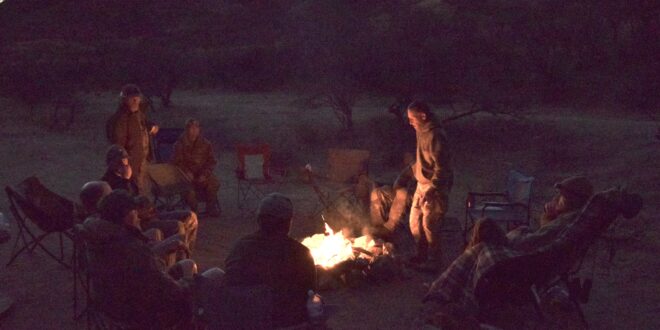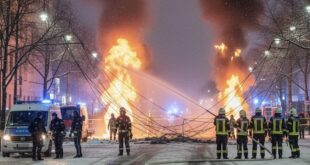by Heath Hansen
“I sent the grids; we’ll be heading out by noon on Thursday,” Tim Foley informs me over the phone, before I hit the road. Foley is a grizzled former paratrooper of the 82nd Airborne Division, and leader of the volunteer group Arizona Border Recon (AZBR).
For more than a decade, AZBR volunteers have assisted Border Patrol by sharing intelligence concerning the movement or location of illegal immigrants crossing the international border. In the prior weeks, I have coordinated calls and emails between Foley and his men to ensure the proper paperwork and background checks are complete. Now, I can partake in their training regimen executed in the mountains of Southern Arizona.
Staying true to their motto, One Hill At a Time, these guys will be training in the same hills they patrol during operations. Years ago, I learned of AZBR while watching a documentary about drug cartels south of the border. Now, I jump on the opportunity to get in the field, and see how Foley and his men operate.
It’s Wednesday morning, and my vehicle is packed with everything I will need to survive in the wilderness for the next few days. It’s been over a decade since I served as an infantryman in the Army, making myself comfortable in the mountains of Afghanistan and deserts of Iraq; hopefully some of that training and experience will pay off during my stay. The drive through the Southwest United States eventually brings me to Arivaca, AZ. From here, I make my way into the Coronado National Forest.
The roads are not paved. In fact, in some spots, they are almost non-existent. Treacherous, rocky, desert terrain greets me as I make my way into the mountains and wind my way higher in elevation towards the grid coordinates. Hawks hover above my car, tall saguaro cacti loom over the road, and deer hop out in front of me during the trip. I arrive at the campsite, less than a mile from the Mexican border. Surrounded by pick-up trucks, SUV’s, and camping tents, I see Foley with his guys, wearing MultiCam camouflage, and sitting around a fire, trying to stay warm.
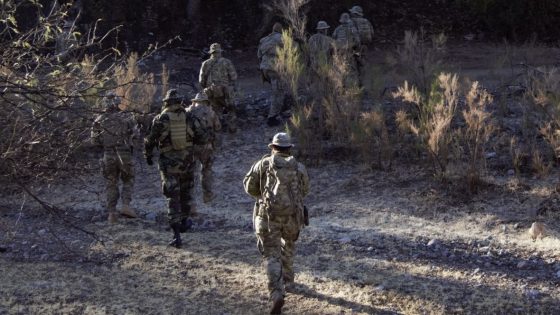
I greet them all and shake their hands. A mix of veterans, law-enforcement officers, and civilians make up the group. They ask if I need help getting situated, but I decline, and tell them I’m sleeping on a blow-up mattress in the back of my SUV, so set-up should be quick and easy. After unpacking my gear, I head back to the fire to get acquainted with the guys.
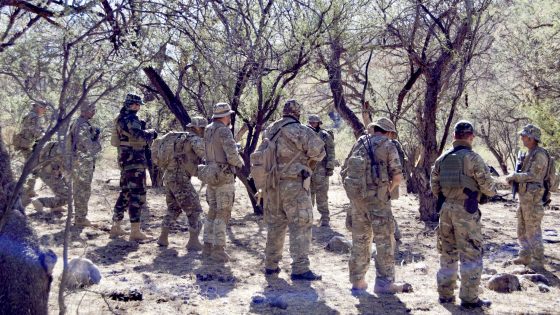
Among the group is expert tracker Fernando Moreira. Moreira started his tracking career as a paratrooper in the Portuguese Army decades ago. He has used his expertise in several investigations, including the high profile manhunt for cop-killer Christopher Dorner. Moreira will be with us teaching a tracking class; I’m intrigued. It’s dark now and starting to get cold; we expect freezing temperatures going into the morning.
I wake up the next day and find my rucksack covered in frost. Hoping the sun’s rays will peak over the mountain tops soon, we gear up. I put on my old Army issued, woodland patterned BDU’s (Battle Dress Uniform), boots, ammunition rack and grab my AR-15. We walk towards a clearing in the trees and start doing basic tracking; looking at footprints, drawing diagrams, taking measurements and looking for “sign” – anything that is disturbed by the humans being tracked.
Some of the sign can be obvious and seen from many meters away, but other sign is more subtle and requires literally getting down on hands and knees to observe small dirt and debris out of place. We eventually progress into small unit tactics and do drills involving fire-team and squad movements to contact. The training is similar to what I did at Fort Bragg preparing for my deployments; I start to feel nostalgic.
Next to the clearing, in the training area, I find two pieces of carpet with straps and laces sewn to the non-carpeted side; I also find a black, non-transparent, plastic bottle nearby. Tim tells me these are “carpet shoes” used by the illegal aliens to hide the tracks left behind as they move across the border. Once they feel they are deep enough inside the U.S. and their tracks are well hidden, they will discard the shoes and continue on their journey northward into the States.
The black bottle is made in Mexico and carried by the migrants during their trek into the desert; these bottles are popular because they do not reflect sunlight as much as the transparent bottles, and make it more difficult to detect during movement. As our instruction continues, I find more of these carpet shoes and black bottles in the local surroundings.
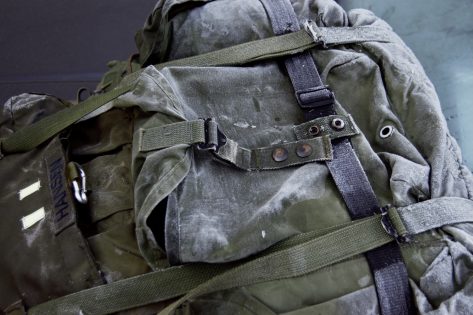
At the end of the day, we head back to the camp and get the fire going again; as it grows and coals begin to form, we start dinner. I put a couple of cans of soup in the fire ring and wait for them to warm up. Some of the AZBR guys brought instant meals that only require hot water, while others brought marinated meats with grills and all the extras necessary for tasty food.
These guys spend lots of time in the mountains and tell me, “Eventually, it’s all about being comfortable when you get to camp.” They offer me cuts of meat as well as homemade desserts. It is quickly becoming apparent that this is a tight-knit group with a strong sense of camaraderie. We kick back and start trading stories about our respective careers and some of the things we have witnessed and experienced. The night sky is crystal clear; the planets are easily visible and shooting stars are abundant. I can see the allure in joining Foley with AZBR.
The next morning we start training again. Moreira comes out wearing a ghillie suit. “Today, you guys are going to use what you learned to track me,” he tells us. Moreira heads out into the thick brush and disappears. The team leader establishes a plan and assigns positions for each man. I draw rear security: while patrolling I will need to check the six o’clock position regularly to prevent an attack from behind. A few minutes later, we head out.
READ MORE from Heath Hansen and the Arizona Border Recon
The team tracker finds a good footprint and takes notes on its characteristics. He relays the info to the team leader and we slowly, methodically, make our way through the foliage, looking for the suspect. At times, progress is slowed by bushes with sharp thorns that catch our uniforms and pull on our equipment, slowing our advance. We have to duck and crawl, to avoid tree branches and other thick vegetation in the way. Eventually the tracker finds a small piece of the ghillie suit worn by the suspect and we know we are on his tail.
The point man finds a piece of fishing line set across two trees and notifies the team leader. We get down, and I take a sip from my Camelbak as the temperature in the vegetation starts to rise. The team sees something about 35 meters ahead of us. The leader has everyone get into a column and begin honing in on the supposed position of the suspect. I head over and start scanning, the team moves closer and closer to the position, they approach the spot.
BANG! You’re dead.
I turn around. Behind me, sitting on a rock, pressed up against a thick tree, is Fernando. I can see a smile behind the strands on his ghillie suit. I lay down. The team reaches the spot they thought was Fernando and realize it was just a dark rock. One of the volunteers looks over and sees me lying on the ground. “You alright, Hansen,” they ask? “I’m f***** dead,” I reply. They try to get back in formation and regroup, but it’s too late.
BANG! BANG! BANG! ALL OF YOU ARE DEAD!
The suspect, Fernando has won. Laughing, he tells everyone to come in and gives us a debriefing on the scenario. Fernando explained what we did right and wrong, and what was necessary for improvement. The training continued and included more iterations of searching for the suspect. The group became a more cohesive unit and during some run-through’s, we were finding the suspect without losing any men.
Later that night, at the campfire, Foley checks his satellite phone and tells us some of the recently released statistics on the Border Patrol Tucson Station (covering 25 miles of border), in the past two weeks: 1,256 apprehensions, 1,289 “got aways,” 176 “TBS” (turn back south), 656 outstanding. “There is not enough manpower to stop all the illegal crossings,” one of the AZBR members, whose career is with Border Patrol, explains, while putting a dip of tobacco in his lip. Often, there will be multiple groups coming across with 20-30 people, but only four agents assigned to the shift. The agents will collectively pick a group and try to track them down before they get too deep into the US. The rest of the groups essentially get a free pass and may or may not be picked up at checkpoints within the US or found by Immigration and Customs Enforcement (ICE) later.
The border is long and porous; the sentiment here is that Trump’s wall will help close some of the gaps, but ultimately, more manpower is necessary. For a while we are quiet; the fire snaps and smoke twists into the air, disappearing into the endless night sky. I ask Foley why he has taken it upon himself to patrol the border. Pausing for a moment, he takes a drag from his cigarette, and, with no thread of uncertainty responds, “Because I love my country.”
The following morning, I pack up my gear and headed home. For AZBR, the training will continue a few more days. Foley invites me to the next planned operation. If I’m still in the States, I might make the drive out. Foley and his men will be here, in the Southern Arizona mountains, helping the Border Patrol by tracking, and providing intelligence on the movement of illegal immigrants across the border.
I watch them as they fade into the thick vegetation; the Arizona Border Recon mission continues, day and night, One Hill At a Time.
Heath Hansen is SOF’s Paramilitary Correspondent. See more of his work, here.
 Soldier of Fortune Magazine The Journal of Professional Adventurers
Soldier of Fortune Magazine The Journal of Professional Adventurers


